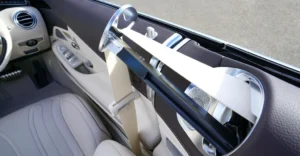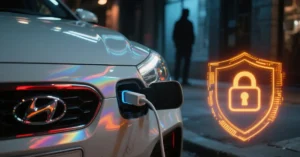Driving in fog is one of the most challenging and dangerous weather conditions motorists can face. Reduced visibility, slick roads, and delayed reactions all contribute to higher accident risks. Whether you’re commuting early in the morning or traveling through mountainous or coastal areas where fog is more common, understanding how to safely navigate through fog can help prevent accidents and protect lives.
Here are the most important safety tips every driver should know before driving in foggy conditions.
1. Keep a Safe Distance
When visibility drops, so should your following distance. In clear conditions, a two-second gap from the car in front might be fine, but in fog, double or even triple that space. This extra buffer gives you more time to respond if the vehicle ahead suddenly stops or swerves.
2. Use Low-Beam Headlights or Fog Lights
Contrary to instinct, using high beams in fog actually makes visibility worse by reflecting light back at you. Stick to low-beam headlights, which illuminate the road more effectively in low-visibility conditions. If your vehicle has fog lights, switch them on for better lateral illumination.
3. Keep Your Windshield and Windows Clear
Before you start your journey, make sure your windshield is clean inside and out. Use your windshield wipers and defoggers to keep visibility as clear as possible. Dirt and smudges on the glass can scatter light and reduce your ability to see the road.
4. Don’t Rely on the Car in Front of You
Many drivers instinctively follow the tail lights of the vehicle ahead. This can be dangerous if the lead driver makes a mistake or stops suddenly. Instead, focus on your own path and follow road markings, especially the solid white line on the right side.
5. Use Road Markings to Guide You
When visibility is low, road lines become your best reference. Keep your attention on the right-side road marking to help you maintain lane discipline and stay safely away from oncoming traffic.
6. Avoid Cruise Control
Fog demands your full attention and control of your vehicle. Cruise control can delay your reaction time when quick speed adjustments are needed. Keep your foot on the accelerator so you can respond to sudden changes immediately.
7. Reduce Your Speed
Slowing down in fog isn’t just about seeing better it’s also about giving yourself more time to react. Driving at high speeds when visibility is compromised increases your stopping distance and the likelihood of a crash.
8. Brake Gently and Early
When slowing down or approaching a junction, tap your brakes gently and early to alert drivers behind you. This reduces the chance of being rear-ended. In extremely thick fog, consider briefly tapping your brakes even when just adjusting your speed to alert others.
9. Pull Over if Visibility is Too Poor
If you feel like you can’t see far enough to drive safely, it’s okay to pull over. Choose a safe location well away from traffic lanes, such as a rest stop or wide shoulder. Keep your hazard lights on so other drivers can see your vehicle.
10. Delay Your Drive If Possible
If the fog is extremely thick and you’re not facing an urgent situation, consider waiting it out. Fog often clears as the sun rises and temperatures change. Leaving an hour later could drastically improve driving conditions.
11. Stay Calm and Stay Focused
Fog can be mentally exhausting. Stay relaxed, avoid distractions like mobile phones, and concentrate on your surroundings. Stay alert for pedestrians, cyclists, animals, or debris that may suddenly appear in front of you.
When Else Is Driving Especially Dangerous?
- At Night: Visibility is already low, and fog amplifies the challenge. Avoid driving at night in fog unless absolutely necessary.
- During Weekends or Holidays: Heavier traffic, higher rates of impaired driving, and more distractions increase the risk.
- Summer Holidays: The period between June and August is often dubbed the “100 Deadliest Days” on the road due to increased travel and younger, inexperienced drivers.
- Back-to-School Season: Teen drivers adjusting to new routines can lead to higher accident rates.
- Rainy or Wet Fog: Fog can make roads slippery, especially when mixed with leaves, oil, or dirt. Drive as you would in light rain: slowly, carefully, and with added distance.
Frequently Asked Questions
Should I drive in fog?
Only if necessary. Light fog might be manageable with caution, but heavy fog can be hazardous. If possible, delay your journey until conditions improve.
How fast can I drive in fog?
Your speed should be adjusted based on visibility. There is no universal limit; the rule is to drive only as fast as you can safely see and stop.
Is fog dangerous for traction?
Yes, fog often leads to damp roads. This moisture can reduce traction, especially when combined with fallen leaves or dust. Always drive as if the road could be slick.
Can fog lights really help?
Yes. Fog lights are designed to emit a wide, low beam that stays close to the road surface. This minimizes glare and maximizes visibility in foggy conditions.
What if my windshield fogs up inside the car?
Use the defogger setting and air conditioner together. It helps remove interior moisture quickly. Keep your windows slightly open to improve airflow if necessary.
Final Thoughts
Driving in fog is never ideal, but with the right mindset and preparation, it can be done safely. At MotorHub, your safety is always our priority. Whether you need a fog light upgrade, a quick vehicle inspection, or just want expert advice before a road trip, we’re here to help.
Stay safe, stay alert, and don’t take unnecessary risks. If you’re ever unsure about road conditions, trust your instincts and choose safety first.



